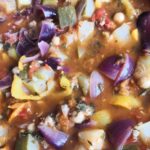The easiest way to start saving seeds is from self-pollinating fruiting vegetables that are being grown in the greenhouse or polytunnel, such as tomatoes, chilli peppers, aubergines and sweet peppers. Their seeds should last for a few years when stored correctly. Read on to find out how to save seeds from self-pollinating vegetables, so that the seeds you save will grow ‘true’ and you get the same healthy vegetables next year.
Category - Saving seeds
Saving seeds from your homegrown vegetables is fun, and worthwhile if you plan to grow them again. It’s cheaper than buying the seeds every year and, if you save seeds from your most successful plants, then their seeds should be more suited to your soil and climate conditions. When dried and stored correctly, saved homegrown seeds can last for years, but it’s not something to be left to chance. You want to save seeds that are healthy, strong and ‘true to type’. This means saving seeds from vegetables whose parent plants are of the same variety. Wind and insects can transport pollen randomly between similar flowers, but their seeds are not worth saving. Read on to discover the basic principles of saving seeds easily and safely.
The easiest way to start saving seeds is from fruiting vegetables grown in the greenhouse or polytunnel. Cucumbers are cross-pollinating plants, which means you need to hand-pollinate a few flowers in order to safely save their seeds. Read on to find out how to save seeds by hand pollination, so that the seeds you save will grow ‘true’ and you get the same healthy cucumbers next year.








